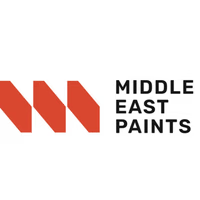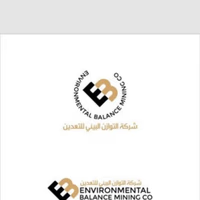
Saudi Arabia is one of the largest economies in the Middle East and has rich oil and gas resources. In the past, the export of Saudi oil and gas to world markets has been one of the most important sources of income for this country. Also, as one of the member countries in the Organization of Petroleum Exporting Countries (OPEC), Saudi Arabia plays an important role in the global oil market.
Saudi Arabia is also known as a big market for importing products from other countries. The products that enter Saudi Arabia from the global market include things such as food, household appliances, automobiles, electronic products, health and cosmetics, sports equipment, etc. Food, automotive and petrochemical industries are also developed in Saudi Arabia.
You can get more information about ways to contact Saudi Arabian businessmen through the Saudi Arabian embassy or consulate in your country. Also, visiting the sites related to Saudi companies and commercial organizations, consulting with commercial and economic experts or using communication methods such as phone calls and emails can also help you get more information.
-

 Saudi Arabia
Mualim Alminyum Tarkeeb wa Siyanat Mataabikh fi Sharurah
Saudi Arabia
Mualim Alminyum Tarkeeb wa Siyanat Mataabikh fi Sharurah
Aluminum installer and kitchen maintenance in SharurahDetails
-
 Saleh Aljabri 1 months ago
Saleh Aljabri 1 months ago Saudi Arabia
Steel
Saudi Arabia
Steel
We act as intermediaries in the trade of steel and oil and its derivatives. We are looking for customers in Azerbaijan to purchase rebar and railway b...Details
-
 Hossam 4 months ago
Hossam 4 months ago Saudi Arabia
Tsinat Meteor
Saudi Arabia
Tsinat Meteor
Tsinat meteor or taktit I don't know I want to sellDetails
-
 Ahmad 13 months ago
Ahmad 13 months ago Saudi Arabia
Meteor
Saudi Arabia
Meteor
Meteor presentationDetails
-
 Ahjar Karima Wa Niyazik 1 months ago
Ahjar Karima Wa Niyazik 1 months ago Saudi Arabia
Meteors
Saudi Arabia
Meteors
The magnetism is very light - external combustion is present - the fingerprint is presentDetails
-
 Hajar Nizak 1 months ago
Hajar Nizak 1 months ago Saudi Arabia
Hajar Nizak
Saudi Arabia
Hajar Nizak
Hajar NizakDetails
-
 Saad Ali 1 months ago
Saad Ali 1 months ago Saudi Arabia
Feed
Saudi Arabia
Feed
I would like to present some achievements here on your site.Details
-
 Middle East Paints 1 months ago
Middle East Paints 1 months ago Saudi Arabia
Paints
Saudi Arabia
Paints
At Middle East Paints, we believe colors are more than just paint- they’re expressions of you. Our Soft and Vibrant colours inspire creativity and tur...Details
-
 Samir Abdullah Maher 1 months ago
Samir Abdullah Maher 1 months ago Saudi Arabia
Secret Glass
Saudi Arabia
Secret Glass
Secret GlassDetails
-
 Abu Asma Al-Yafi'i 1 months ago
Abu Asma Al-Yafi'i 1 months ago Saudi Arabia
Meteorite
Saudi Arabia
Meteorite
MeteoriteDetails
-
 Haider 5 months ago
Haider 5 months ago Saudi Arabia
Haider Traders
Saudi Arabia
Haider Traders
Trading for dates and otherDetails
-
 Foolaz 1 months ago
Foolaz 1 months ago Saudi Arabia
Meteor
Saudi Arabia
Meteor
MeteorDetails
-
 Ibrahim Mohsen Al-Kharami 1 months ago
Ibrahim Mohsen Al-Kharami 1 months ago Saudi Arabia
May you be rewarded, a magnet attractor of the recent fall
Saudi Arabia
May you be rewarded, a magnet attractor of the recent fall
A meteorite that is not magnetic, a fall site in the south of the Kingdom, Jizan, Al-Ateelah, recently discovered.Details
-
 Omar Ahjar Karima 1 months ago
Omar Ahjar Karima 1 months ago Saudi Arabia
Agate
Saudi Arabia
Agate
Natural agate stone with beautiful color interference, tested with a laboratory certificate size and details with a certificateDetails
-
 Nahr Al-Imdad 1 months ago
Nahr Al-Imdad 1 months ago Saudi Arabia
Nahr Al-Imdad Company for Supplying Fruits and Vegetables in Jeddah
Saudi Arabia
Nahr Al-Imdad Company for Supplying Fruits and Vegetables in Jeddah
Nahr Al-Imdad Company is pleased to offer our services in supplying all types of vegetables and fruits in bulk and semi-bulk at the best competitive p...Details
-
 Abu Jawad 4 months ago
Abu Jawad 4 months ago Saudi Arabia
For sale, please be serious in the sale - Gift from the Sky (Meteorites)
Saudi Arabia
For sale, please be serious in the sale - Gift from the Sky (Meteorites)
Rare meteorites and diamondsDetails
-
 Sharikat Al-Tawazun Al-Bi'i Li-Ta'din 15 months ago
Sharikat Al-Tawazun Al-Bi'i Li-Ta'din 15 months ago Saudi Arabia
Sand of All Types and Gravel
Saudi Arabia
Sand of All Types and Gravel
Peace be upon you, I would like to clarify the product which is a type of sand including coarse sand, powder sand, and regular sand, with a quartz con...Details
-
 Ali Mohammed Ali Asiri 12 months ago
Ali Mohammed Ali Asiri 12 months ago Saudi Arabia
Meteorite Stone
Saudi Arabia
Meteorite Stone
Meteorite for saleDetails
Saudi Arabia's economy is characterized by a robust GDP, which reached approximately $1.07 trillion in 2023, reflecting a significant growth trajectory from $874 billion in 2021. This growth, however, is accompanied by a slight decline from the previous year, indicating potential volatility. The Gross National Income (GNI) mirrors this trend, highlighting the country's strong economic foundation. In terms of trade, Saudi Arabia's merchandise import value indices have shown fluctuations, with a peak of 124.2 in 2022 before declining to 109.0 in 2023. This decline suggests a tightening in import activities, which could present opportunities for local suppliers and verified exporters looking to fill gaps in the market. Additionally, the country's total reserves, including gold, remain substantial at around $458 billion, providing a buffer against economic shocks.
When comparing Saudi Arabia's performance to global averages, the country shows a higher GDP growth rate than the global average of approximately 3.5%. However, the current account balance has shifted from a surplus to a deficit, indicating potential risks for new traders. The inflation rate has also surged, reaching 8.6% in 2023, which could affect purchasing power and trade dynamics. Entrepreneurs should be mindful of these economic indicators while exploring the B2B marketplace in Asia, particularly in the context of commodity trade in the Middle East. By leveraging market insights and establishing strong business networks, new traders can navigate these challenges effectively and capitalize on the opportunities available in Saudi Arabia's dynamic market.
























